WOW
SLOW TRAVEL
52 CITIES
1 WEEK
EACH CITY
52 WEEKS
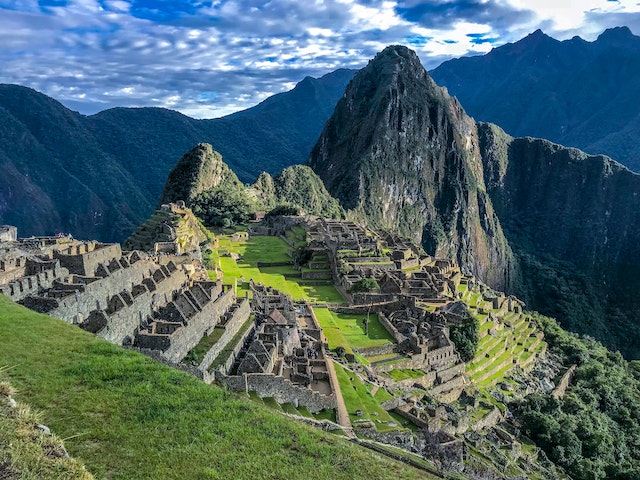
Peru
Peru, located on the western coast of South America, is a country renowned for its rich cultural heritage, stunning natural landscapes, and diverse cuisine. It’s a destination that offers a wide range of experiences, from exploring ancient archaeological wonders to indulging in world-class culinary delights. Here’s an overview of Peru:
Historical Wonders: Peru is home to some of the world’s most iconic archaeological sites, including Machu Picchu, an ancient Inca citadel perched high in the Andes Mountains. Cusco, the former capital of the Inca Empire, also features impressive Inca ruins and colonial architecture.
Cultural Diversity: Peru is a country of great cultural diversity, with a blend of indigenous, European, African, and Asian influences. This diversity is reflected in its art, music, dance, and festivals.
Machu Picchu: This UNESCO World Heritage site is one of the most famous and well-preserved archaeological sites in the world. It offers breathtaking views of the Andes and a glimpse into the ancient Inca civilization.
Cusco: The city of Cusco is often considered the gateway to Machu Picchu. It’s a charming and historic city with well-preserved colonial architecture and a vibrant atmosphere. The Plaza de Armas is a central gathering place surrounded by churches and museums.
Sacred Valley: The Sacred Valley of the Incas, located near Cusco, is known for its picturesque villages, ancient ruins, and fertile agricultural terraces. It’s an ideal place for exploring Inca history and enjoying the stunning scenery.
Amazon Rainforest: Peru is home to a portion of the vast Amazon Rainforest, offering opportunities for jungle adventures, wildlife viewing, and birdwatching. Iquitos and Puerto Maldonado are popular entry points into the Amazon basin.
Lake Titicaca: Situated high in the Andes, Lake Titicaca is one of the world’s highest navigable lakes. It’s known for its floating islands and traditional indigenous communities, such as the Uros people.
Culinary Excellence: Peruvian cuisine is celebrated worldwide for its diverse flavors and ingredients. Dishes like ceviche, causa, and lomo saltado are popular choices. Peru is also known for its quinoa, potatoes, and unique Amazonian ingredients.
Adventure Tourism: Peru offers a range of outdoor activities, from trekking and hiking in the Andes to surfing along the Pacific coast. The Colca Canyon is one of the world’s deepest canyons and offers fantastic trekking opportunities.
Nazca Lines: The Nazca Lines are a series of ancient geoglyphs etched into the desert floor in southern Peru. These enigmatic designs include giant animals and geometric shapes and have puzzled archaeologists and historians for decades.
Inca Trail: The Inca Trail is a famous trekking route that leads to Machu Picchu. It’s a challenging but rewarding journey that takes hikers through stunning mountain scenery and ancient ruins.
Safety: Peru is generally considered safe for tourists, but like any other destination, it’s important to take standard precautions and be aware of local conditions.
Peru offers a wealth of experiences for travelers, from exploring ancient history and natural wonders to savoring delicious cuisine and immersing oneself in diverse cultures. Whether you’re an adventure seeker, a history enthusiast, or a foodie, Peru has something to offer every type of traveler
Peru offers several cities and regions that can be attractive for American retirees looking to enjoy a more affordable yet culturally rich retirement. Here are some of the best cities to consider for retirement in Peru:
Lima: As the capital and largest city, Lima offers a diverse range of amenities, including modern healthcare facilities, shopping centers, and international cuisine. Neighborhoods like Miraflores and San Isidro are popular among expatriates due to their safety and access to services. Lima’s coastal location also provides a pleasant climate.
Cusco: Cusco, often considered the archaeological capital of the Americas, is a charming city with a rich history. Its proximity to Machu Picchu and the Sacred Valley makes it an ideal base for exploring Inca ruins. The city’s historic center is a UNESCO World Heritage site with well-preserved colonial architecture.
Arequipa: Known as the “White City” for its stunning white volcanic stone buildings, Arequipa enjoys a mild climate and a slower pace of life. The city offers a blend of culture and history, with a lively arts scene and delicious Peruvian cuisine.
Trujillo: Located on the northern coast, Trujillo is known for its archaeological sites like Chan Chan and Huaca de la Luna. It boasts a pleasant coastal climate and a relaxed atmosphere. The city also has a vibrant cultural scene and beautiful colonial architecture.
Huanchaco: A beach town near Trujillo, Huanchaco offers a relaxed beachside lifestyle with excellent seafood restaurants and a growing expatriate community. The famous totora reed boats are a unique feature of this area.
Cajamarca: Situated in the highlands, Cajamarca offers a cooler climate and a strong cultural heritage. It’s known for its hot springs, historical sites, and welcoming locals.
Ayacucho: Ayacucho is another highland city with a rich cultural scene. It’s known for its religious festivals and handicrafts, making it an ideal place for retirees interested in immersing themselves in Peruvian traditions.
Huaraz: Nestled in the Andes, Huaraz is a gateway to some of the country’s best trekking and outdoor adventure opportunities. The city’s stunning mountain views and relatively low cost of living make it an attractive option for retirees who enjoy outdoor activities.
Iquitos: Located in the heart of the Amazon Rainforest, Iquitos offers a unique retirement experience for those seeking adventure and immersion in the jungle. It’s known for its wildlife, river excursions, and vibrant culture.
Tarapoto: Another Amazonian city, Tarapoto is surrounded by lush rainforest and offers a quieter lifestyle. It’s a great place for nature lovers who want to explore the jungle while enjoying modern conveniences.
When considering retirement in Peru, it’s essential to research each location thoroughly, visit potential retirement destinations, and consult with local experts and expatriates to make an informed decision based on your preferences, budget, and lifestyle. Peru’s diverse regions provide retirees with various options to find the perfect balance of culture, climate, and cost of living that suits their needs
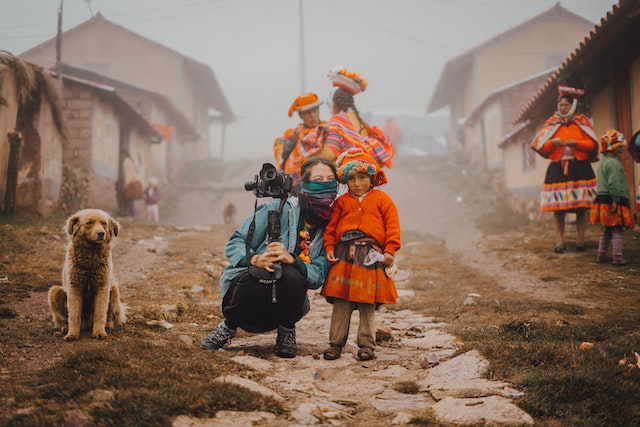
Lima
Lima, the capital and largest city of Peru, is a vibrant and bustling metropolis located on the country’s central western coast. Known for its rich history, diverse culture, and a unique blend of tradition and modernity, Lima is a dynamic city with much to offer. Here’s an overview of Lima, Peru:
Historical Significance: Lima was founded by Spanish conquistador Francisco Pizarro in 1535 and served as the capital of the Spanish Viceroyalty of Peru. Its historic center, known as the “City of Kings” (Ciudad de los Reyes), is a UNESCO World Heritage site, featuring well-preserved colonial architecture, churches, and plazas.
Cosmopolitan Hub: Lima is a cosmopolitan city with a diverse population that includes indigenous, European, African, and Asian influences. This diversity is reflected in its culture, cuisine, and traditions.
Cultural Attractions: The city boasts numerous museums, art galleries, and cultural centers. The Larco Museum, Museo de la Nación, and the Museo de Arte de Lima (MALI) are just a few examples of the city’s cultural offerings.
Gastronomic Capital: Lima is renowned as a culinary mecca. Its restaurants offer a wide range of cuisine, from traditional Peruvian dishes like ceviche and lomo saltado to international fusion cuisine. The city has multiple restaurants ranked among the world’s best.
Coastal Beauty: Lima is situated along the Pacific Ocean and features a scenic coastline with cliffs and beaches. The districts of Miraflores and Barranco offer some of the city’s most stunning views, seaside parks, and upscale dining.
Shopping: Lima offers a variety of shopping experiences, from upscale malls like Larcomar to traditional markets such as Mercado de Surquillo, where you can find fresh produce, textiles, and handicrafts.
Cultural Festivals: Lima hosts numerous cultural events and festivals throughout the year, celebrating everything from Peruvian cuisine and music to religious traditions. Semana Santa (Holy Week) and the Fiestas Patrias (Independence Day) are particularly significant celebrations.
Business and Commerce: Lima is the economic hub of Peru and home to various industries, including finance, commerce, and manufacturing. This economic activity contributes to the city’s overall vitality.
Education and Healthcare: Lima has a well-developed healthcare system and several prestigious universities, making it an attractive destination for retirees and expatriates seeking quality medical care and educational opportunities.
Safety: Lima is generally considered safe for tourists and residents. However, like in any major city, it’s important to exercise standard precautions and be aware of your surroundings.
Transportation: Lima has an extensive public transportation system, including buses and the Metropolitano bus rapid transit system. Traffic congestion can be an issue during peak hours, but taxis and ridesharing services are readily available.
Retirement: Lima has become a popular destination for retirees seeking a mix of urban amenities, cultural experiences, and a moderate cost of living. Neighborhoods like Miraflores and San Isidro are often favored by expatriates.
Lima, Peru, is a city that seamlessly blends history, culture, and modernity. Its diverse neighborhoods offer a range of experiences, from exploring colonial architecture to savoring world-class cuisine. Whether you’re interested in history, arts, gastronomy, or simply soaking in the vibrant atmosphere of a dynamic city, Lima has something to offer for everyone
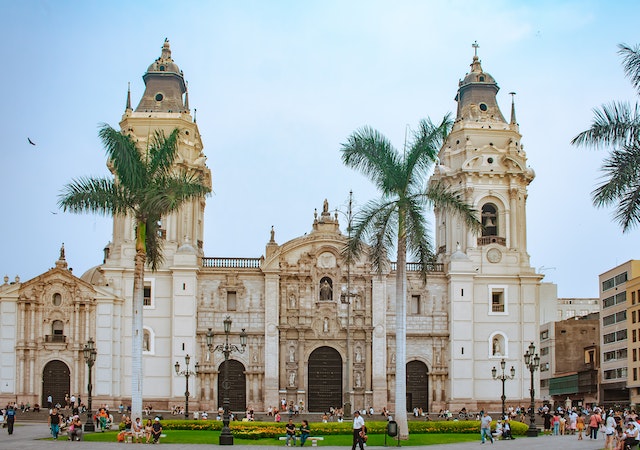
Cusco
Cusco, often referred to as the “Archaeological Capital of the Americas,” is a historic and culturally rich city located in the Andes Mountains of Peru. It’s renowned for its Inca heritage, stunning architecture, and its role as the gateway to the world-famous Machu Picchu. Here’s an overview of Cusco, Peru:
Inca Heritage: Cusco was the capital of the Inca Empire and is filled with remnants of this ancient civilization. The city’s historical center showcases Inca stone walls and foundations, such as the famous 12-angled stone, which serves as a testament to their advanced engineering skills.
Historic Center: Cusco’s historic center is a UNESCO World Heritage site, characterized by well-preserved colonial architecture, picturesque squares like the Plaza de Armas, and charming narrow streets. The Cathedral of Cusco and the Church of Santo Domingo, built atop an Inca temple, are notable landmarks.
Gateway to Machu Picchu: Cusco serves as the starting point for many visitors embarking on the journey to Machu Picchu, one of the New Seven Wonders of the World. Travelers can choose from various routes, including the Inca Trail, to reach this iconic archaeological site.
Culture and Traditions: Cusco maintains strong ties to its Inca and Quechua heritage. Traditional festivals, music, and dance are an integral part of the city’s culture. Inti Raymi, the Festival of the Sun, is a significant annual celebration.
Archaeological Sites: In addition to Machu Picchu, Cusco offers access to other significant archaeological sites such as Sacsayhuamán, Q’enqo, Pukapukara, and Tambomachay. These sites showcase Inca engineering and religious practices.
Crafts and Markets: Cusco is known for its vibrant markets and artisanal crafts. The San Pedro Market is a bustling place where you can purchase textiles, jewelry, and traditional Peruvian goods. The city’s artisans are known for their skilled craftsmanship.
Adventure Hub: Cusco is a base for adventure seekers. Besides the Inca Trail, activities like trekking, mountain biking, and white-water rafting are popular in the surrounding Andes and Amazon rainforest.
Cosmopolitan Atmosphere: Cusco’s international visitor presence has created a cosmopolitan atmosphere, with a variety of restaurants, bars, and accommodations catering to different tastes and budgets.
Language: While Spanish is the official language, many locals in Cusco speak Quechua, the indigenous language of the Inca Empire. English is also commonly spoken in tourist areas.
Altitude: Cusco is located at a high altitude of approximately 11,152 feet (3,399 meters) above sea level. Visitors should take precautions to acclimatize slowly to avoid altitude sickness.
Safety: Cusco is generally considered safe for tourists, but it’s important to take standard precautions, such as safeguarding belongings and staying aware of your surroundings.
Cusco, Peru, offers a captivating blend of history, culture, and natural beauty. It’s a city where ancient traditions coexist with modern amenities, making it a unique destination for travelers interested in exploring the wonders of the Andes and immersing themselves in the legacy of the Inca civilization
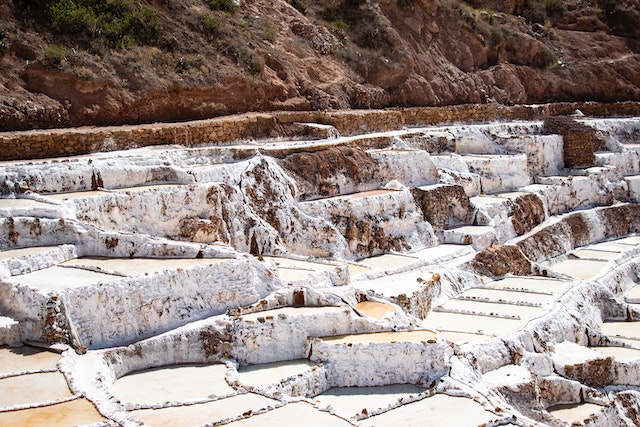
Arequipa
Arequipa, often known as the “White City” (La Ciudad Blanca) due to its extensive use of white volcanic stone in its architecture, is the second-largest city in Peru. Nestled in the Andes Mountains in the southern part of the country, Arequipa is celebrated for its rich cultural heritage, historic city center, and stunning natural surroundings. Here’s an overview of Arequipa, Peru:
Historical Center: Arequipa’s historic center is a UNESCO World Heritage site and one of its most striking features. The city’s colonial architecture, built from white volcanic sillar stone, lends it a unique and picturesque appearance. The Plaza de Armas is the heart of the city and is surrounded by historic buildings and landmarks.
Santa Catalina Monastery: One of Arequipa’s most iconic attractions is the Santa Catalina Monastery, a vast religious complex dating back to the 16th century. It’s a well-preserved example of colonial-era architecture and provides insight into the daily lives of nuns during that period.
Cultural and Culinary Hub: Arequipa is known for its vibrant cultural scene and exquisite culinary offerings. The city boasts a variety of traditional Peruvian dishes, including rocoto relleno (stuffed peppers) and adobo (a spicy stew). Picanterías, traditional Arequipa restaurants, are popular dining choices.
Volcanoes: The city is surrounded by impressive volcanoes, including Misti, Chachani, and Pichu Pichu. These volcanoes offer opportunities for hiking, trekking, and adventure tourism.
Colca Canyon: Arequipa serves as the gateway to the Colca Canyon, one of the world’s deepest canyons. Visitors can enjoy breathtaking scenery, spot Andean condors in flight, and explore traditional villages in this dramatic landscape.
Festivals: Arequipa hosts a variety of cultural and religious festivals throughout the year. One of the most significant is the Feast of Our Lady of Chapi, attracting pilgrims from all over Peru.
Museums: The city features several museums, such as the Museo Santuarios Andinos, where the famous “Ice Maiden” (Juanita) is displayed. This well-preserved mummy was discovered atop Mount Ampato.
Language: Spanish is the official language, but many locals in Arequipa also speak Quechua, especially in rural areas.
Education: Arequipa is home to several universities and educational institutions, making it an academic center in southern Peru.
Climate: Arequipa enjoys a mild and dry climate with plenty of sunshine year-round. Its elevation is approximately 7,661 feet (2,335 meters) above sea level.
Safety: Arequipa is generally considered safe for tourists, but it’s always advisable to take standard precautions and be aware of your surroundings.
Arequipa, Peru, offers a blend of history, culture, and natural beauty. Whether you’re exploring its colonial architecture, venturing into the depths of the Colca Canyon, or savoring its diverse culinary delights, Arequipa provides a captivating experience in one of Peru’s most picturesque settings
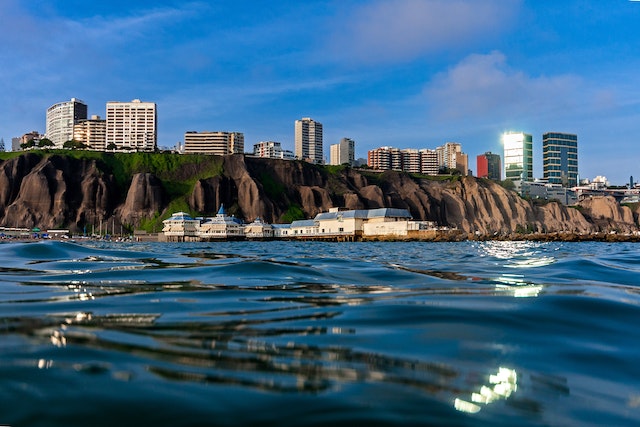
Trujillo
Trujillo is a historic city located on the northwestern coast of Peru. It is the capital of the La Libertad Region and the third-largest city in the country. Known for its rich cultural heritage, archaeological wonders, and vibrant cultural scene, Trujillo is a fascinating destination with much to offer. Here’s an overview of Trujillo, Peru:
Historical Significance: Trujillo was founded in 1534 by Spanish conquistador Francisco Pizarro. The city is known for its well-preserved colonial architecture and its role in Peru’s struggle for independence from Spain.
Historic Center: Trujillo’s historic center is a delight for history and architecture enthusiasts. The Plaza de Armas is the central square, surrounded by colonial-era buildings, including the Cathedral of Trujillo and the Archbishop’s Palace.
Archaeological Sites: Trujillo is often referred to as the “City of the Eternal Spring” and is a gateway to numerous archaeological sites. The nearby Chan Chan, a UNESCO World Heritage site, is the largest adobe city in the ancient world and was once the capital of the Chimu civilization.
Huaca de la Luna: This ancient temple complex, located near Trujillo, features striking murals and carvings from the Moche civilization. It provides valuable insights into the culture and rituals of this pre-Inca civilization.
Huanchaco Beach: Just a short drive from the city center, Huanchaco is a charming fishing village known for its traditional reed boats called “caballitos de totora.” The beach is popular among surfers and offers a relaxed coastal atmosphere.
Cultural Festivals: Trujillo hosts various cultural events and festivals throughout the year, celebrating its heritage and traditions. The Marinera Festival, dedicated to the traditional Peruvian dance, is a major highlight.
Art and Music: Trujillo has a vibrant arts and music scene. Visitors can enjoy live performances, art galleries, and traditional Peruvian music in the city’s cultural venues.
Culinary Delights: Trujillo is known for its delicious coastal cuisine, with an emphasis on seafood. Ceviche, a popular dish of fresh fish or seafood marinated in lime juice, is a must-try. The city’s culinary scene also features traditional Peruvian dishes and international cuisine.
Language: Spanish is the official language, but Quechua and other indigenous languages are also spoken in some areas, especially in rural communities.
Safety: Trujillo is generally considered safe for tourists, but it’s important to take standard precautions, such as safeguarding belongings and being aware of your surroundings.
Trujillo, Peru, offers a blend of history, culture, and coastal beauty. Whether you’re exploring its archaeological wonders, indulging in its culinary delights, or experiencing its vibrant festivals, Trujillo provides a captivating experience that reflects the diverse cultural heritage of Peru’s northern coast
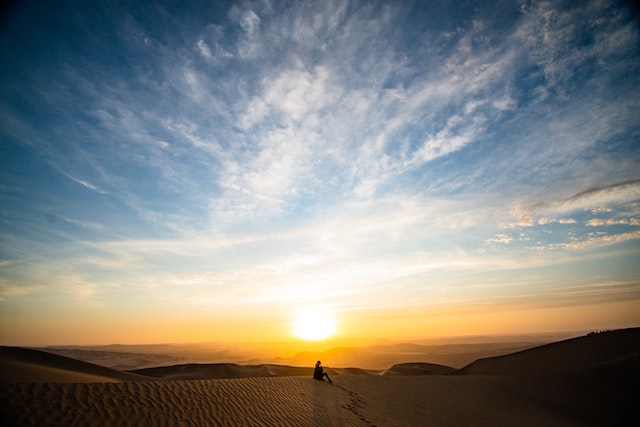
Huanchaco
Huanchaco is a charming coastal town located in northern Peru, just a short drive from the city of Trujillo. It is renowned for its unique traditional reed boats, a laid-back surf culture, and a relaxed beach atmosphere. Here’s an overview of Huanchaco, Peru:
Reed Boats (Caballitos de Totora): Huanchaco is famous for its traditional fishing boats known as “caballitos de totora.” These small, lightweight vessels are made from totora reeds and have been used by local fishermen for centuries. They are still used today for fishing and as a source of income for local families.
Surfing: Huanchaco is a popular destination for surfers, both beginners and experienced riders. The long, gentle waves make it an ideal spot for learning to surf. Surf schools and rentals are readily available along the beach.
Beaches: The town boasts a series of picturesque sandy beaches along the Pacific Ocean. The wide shoreline provides plenty of space for sunbathing, picnicking, and beachcombing.
Laid-Back Atmosphere: Huanchaco has a relaxed and unhurried vibe, making it an excellent destination for those seeking a peaceful getaway by the sea. Visitors can enjoy leisurely walks along the beach, watch the fishermen at work, and savor fresh seafood at beachfront restaurants.
Cultural Experience: The town offers a glimpse into traditional Peruvian coastal life. You can witness local fishermen using their caballitos de totora, visit the small fishing village, and experience the warmth and hospitality of the residents.
Sunsets: Huanchaco is known for its stunning sunsets over the Pacific Ocean. Watching the sun dip below the horizon while enjoying a beachside dinner is a memorable experience.
Eco-Tourism: The nearby wetlands and estuaries provide opportunities for birdwatching and eco-tourism. Bird enthusiasts can spot a variety of species in the area.
Culinary Delights: Huanchaco offers a variety of dining options, from casual beachfront cafes to seafood restaurants. Ceviche, a traditional Peruvian dish made from fresh fish or seafood marinated in lime juice, is a local specialty.
Language: While Spanish is the official language, you’ll find that many locals in Huanchaco also speak some English, especially those in the tourism industry.
Safety: Huanchaco is generally considered safe for tourists. It’s a welcoming and friendly community.
Huanchaco, Peru, is a hidden gem on the northern coast, where tradition and modern beach culture coexist. Whether you’re interested in learning to surf, exploring traditional fishing practices, or simply relaxing by the sea, Huanchaco offers a peaceful and culturally rich beachfront experience that is distinctively Peruvian
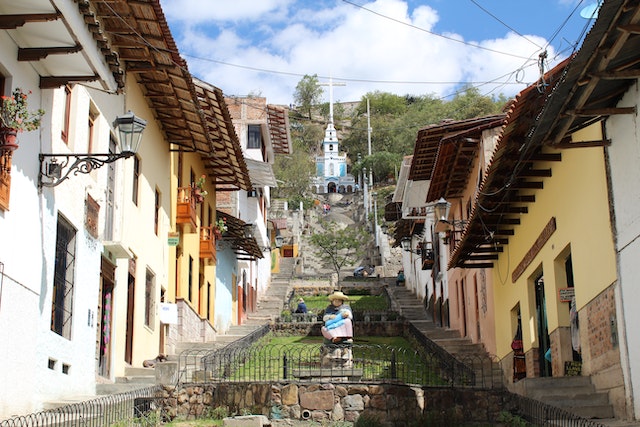
Cajamarca
Cajamarca, located in the northern highlands of Peru, is a historic city with a rich cultural heritage, stunning natural beauty, and a mild climate. Known for its role in history, thermal baths, and traditional festivals, Cajamarca offers a unique experience in the Peruvian Andes. Here’s an overview of Cajamarca, Peru:
Historical Significance: Cajamarca is historically significant as the site where Spanish conquistador Francisco Pizarro captured the Inca emperor Atahualpa in 1532. The event marked a turning point in the Spanish conquest of the Inca Empire.
Plaza de Armas: The city’s central square, Plaza de Armas, is a lively hub surrounded by colonial-era buildings and a stunning cathedral. It’s a great place to start exploring the city.
Banos del Inca: Just outside the city, you’ll find the Banos del Inca (Inca Baths), thermal springs where Inca emperors used to bathe. Visitors can still enjoy these natural hot springs, which are believed to have therapeutic properties.
Cajamarca Carnival: The city hosts the famous Cajamarca Carnival, one of Peru’s most significant and colorful celebrations. The festivities include parades, dance performances, and water fights during February and March.
Culinary Delights: Cajamarca is known for its culinary traditions. Try the local cheese, which is famous throughout Peru. Other traditional dishes include cuy (guinea pig), humitas (corn tamales), and queso helado (a dessert resembling ice cream).
Cultural Heritage: Cajamarca has a vibrant cultural scene, with numerous festivals, music, and dance performances. The city takes pride in preserving its traditions and indigenous heritage.
Cajamarca’s Carnival: While the Cajamarca Carnival is the most famous, the city hosts other traditional festivals throughout the year, allowing visitors to experience the local culture.
Handicrafts: Cajamarca is known for its artisans who produce pottery, textiles, and intricate jewelry. You can find a variety of crafts in local markets and shops.
Natural Beauty: The surrounding region boasts picturesque landscapes, including rolling hills, mountains, and valleys. The high-altitude environment provides a refreshing climate year-round.
Language: Spanish is the official language in Cajamarca, but in more remote areas, indigenous languages such as Quechua are still spoken.
Safety: Cajamarca is generally considered safe for tourists. Like in any city, it’s advisable to exercise standard precautions and be aware of your surroundings.
Cajamarca, Peru, offers a blend of history, culture, and natural beauty. Whether you’re exploring its historical sites, enjoying the local cuisine, or participating in traditional festivals, Cajamarca provides a unique and enriching experience in the heart of the Andes
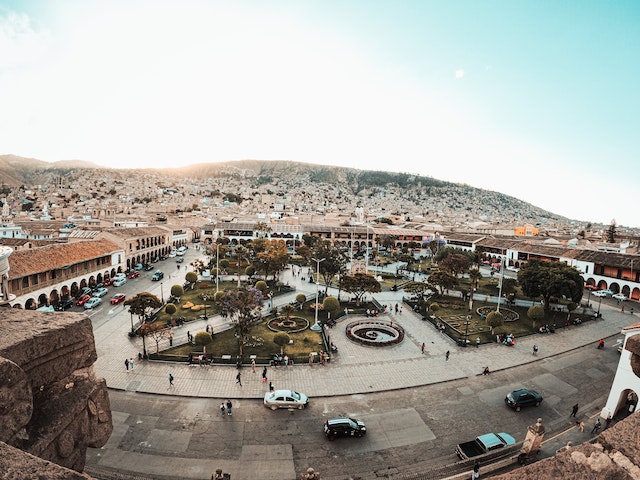
Ayacucho
Ayacucho, a city located in the southern highlands of Peru, is a place of historical significance, cultural richness, and natural beauty. Known for its colonial architecture, vibrant traditions, and the legacy of its past, Ayacucho offers a captivating experience for visitors. Here’s an overview of Ayacucho, Peru:
Historical Significance: Ayacucho played a pivotal role in Peru’s fight for independence from Spanish colonial rule. The Battle of Ayacucho, fought in 1824, was a decisive victory for the Peruvian and South American independence movement. This event marked the beginning of the end for Spanish colonial rule in South America.
Colonial Architecture: Ayacucho boasts a well-preserved colonial historic center with elegant churches, monasteries, and mansions. The Cathedral of Ayacucho and the Church of San Francisco are among the city’s most iconic landmarks.
Artisanal Crafts: The city is renowned for its artisanal crafts, including intricately carved wooden religious figures, textiles, and pottery. Visitors can explore local markets and workshops to witness these crafts being made.
Semana Santa: Ayacucho is famous for its elaborate Semana Santa (Holy Week) celebrations, which are among the most significant in Peru. The city comes alive with processions, music, and religious rituals during this time.
Cultural Festivals: Throughout the year, Ayacucho hosts a variety of cultural festivals, music performances, and dance events that celebrate its indigenous and mestizo heritage.
Wari Ruins: Just outside Ayacucho, you can visit the archaeological site of Wari, the capital of the Wari Empire that predated the Inca Empire. The site offers insights into the history and architecture of this ancient civilization.
Culinary Delights: Ayacucho’s cuisine reflects its diverse cultural influences. Local dishes include pachamanca (a traditional Andean dish), puca picante (spicy pork stew), and humitas (corn tamales).
Natural Beauty: The region surrounding Ayacucho is known for its picturesque landscapes, including rolling hills, high plateaus, and rugged mountains. It’s an excellent destination for hiking and exploring the Andean countryside.
Language: Spanish is the official language in Ayacucho, but Quechua, the indigenous language, is still spoken by many residents, especially in rural areas.
Safety: Ayacucho is generally considered safe for tourists. As with any travel destination, it’s advisable to exercise standard precautions and be aware of your surroundings.
Ayacucho, Peru, offers a unique blend of history, culture, and natural beauty. Whether you’re strolling through its colonial streets, participating in cultural festivals, or exploring ancient ruins, Ayacucho provides a glimpse into the rich tapestry of Peru’s heritage and the enduring spirit of its people
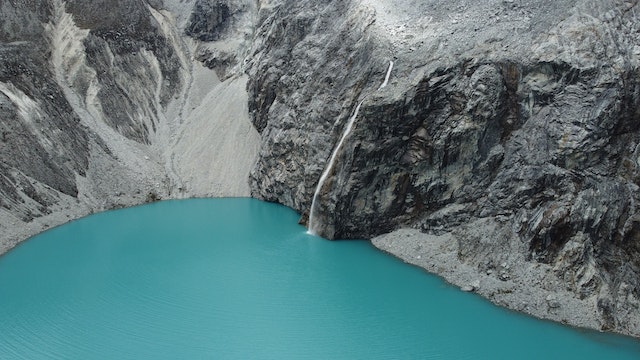
Huaraz
Huaraz is a captivating city nestled in the Cordillera Blanca, part of the Andes mountain range in central Peru. Renowned for its stunning alpine landscapes, outdoor adventures, and access to some of the world’s best trekking, Huaraz is a paradise for nature enthusiasts and adventure seekers. Here’s an overview of Huaraz, Peru:
Trekking and Hiking: Huaraz is often referred to as the “Trekking Capital of Peru” due to its proximity to numerous trekking routes and mountain trails. The most famous trek is the Santa Cruz Trek, which offers breathtaking views of glacial lakes and towering peaks. Other popular treks include the Huayhuash Circuit and the Alpamayo Circuit.
Mountaineering: The Cordillera Blanca is home to some of the highest peaks in Peru, including Huascarán, the country’s highest mountain. Climbers from around the world come to Huaraz to tackle these challenging peaks.
Laguna 69: This pristine glacial lake, located at high altitude, is one of the region’s most iconic destinations. A challenging hike leads you to this turquoise gem nestled among snow-capped peaks.
Archaeological Sites: Huaraz is surrounded by pre-Inca and Inca archaeological sites, such as Chavín de Huántar, an ancient religious center with impressive stone carvings and tunnels.
Callejón de Huaylas: This fertile valley stretching north of Huaraz is known for its picturesque villages, hot springs, and outdoor activities like paragliding and mountain biking.
Cultural Experiences: Huaraz and its surrounding villages offer cultural experiences, including traditional festivals, indigenous markets, and encounters with local Quechua-speaking communities.
Huascaran National Park: The city serves as a gateway to Huascaran National Park, a UNESCO World Heritage site known for its diverse flora and fauna, including the Andean condor.
Language: Spanish is the official language in Huaraz, but Quechua is also spoken, especially in rural areas.
Safety: Huaraz is generally considered safe for tourists. When engaging in outdoor activities, it’s important to follow safety guidelines and be prepared for the high-altitude conditions.
Climate: Huaraz enjoys a pleasant climate during the day, but temperatures drop significantly at night, especially in high-altitude areas. Proper clothing and acclimatization are essential for comfort and safety.
Huaraz, Peru, is a haven for outdoor enthusiasts, offering a wide range of activities in the midst of some of the world’s most stunning natural landscapes. Whether you’re an experienced mountaineer or simply seeking to immerse yourself in the beauty of the Andes, Huaraz provides an unforgettable adventure in the heart of Peru
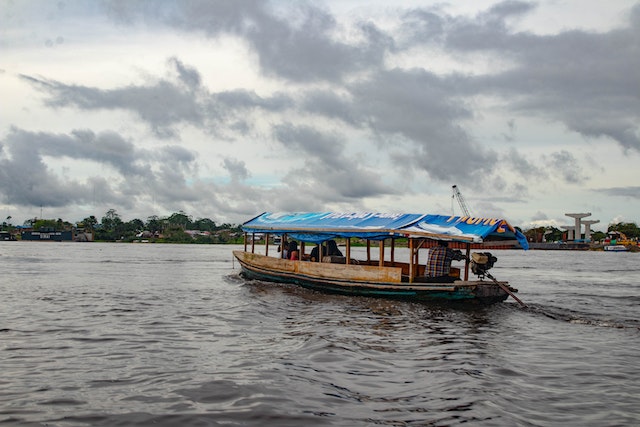
Iquitos
Iquitos is a unique and vibrant city located in the heart of the Amazon Rainforest in northeastern Peru. Known for its remote location, rich biodiversity, and the mighty Amazon River, Iquitos offers an adventure unlike any other. Here’s an overview of Iquitos, Peru:
Isolated City: Iquitos is the largest city in the world that is inaccessible by road. It can only be reached by air or by navigating the Amazon River, making it a remote and exotic destination.
Amazon Rainforest: Iquitos is the gateway to the Amazon Rainforest, one of the most biodiverse regions on Earth. Visitors have the opportunity to explore the jungle’s flora and fauna through guided tours, hikes, and boat trips into the surrounding Amazon Basin.
Amazon River: The Amazon River, the world’s largest river by volume, flows through Iquitos. Travelers can take boat excursions to explore its tributaries, spot wildlife, and visit indigenous villages.
Wildlife Watching: Iquitos offers incredible opportunities for wildlife watching. Visitors can see pink river dolphins, caimans, monkeys, and a wide variety of bird species in their natural habitats.
Ayahuasca Tourism: The region around Iquitos has become known for Ayahuasca retreats, attracting individuals seeking spiritual and healing experiences. Ayahuasca is a traditional Amazonian plant medicine.
Belén Market: The bustling Belén Market is a unique place where residents buy and sell everything from fresh produce to artisanal crafts. It’s often referred to as the “Venice of the Amazon” due to its network of floating houses and walkways.
Cultural Experiences: Iquitos is home to several indigenous communities, and visitors have the opportunity to learn about their customs and traditions. Traditional dances, music, and crafts are often part of these cultural experiences.
Pacaya-Samiria National Reserve: This protected area is one of the largest in Peru and is known for its diverse wildlife and pristine rainforest. Guided tours into the reserve provide a chance to explore this natural wonder.
Language: While Spanish is the official language, many residents in Iquitos also speak indigenous languages, such as Yagua and Bora.
Safety: Iquitos is generally safe for tourists. However, it’s important to take precautions when exploring the jungle, such as using insect repellent and following the guidance of experienced guides.
Iquitos, Peru, is a destination for adventurous travelers who want to immerse themselves in the incredible biodiversity and culture of the Amazon Rainforest. Whether you’re exploring the jungle, interacting with indigenous communities, or embarking on a spiritual journey with Ayahuasca, Iquitos offers a truly unique and unforgettable experience in the heart of the Amazon
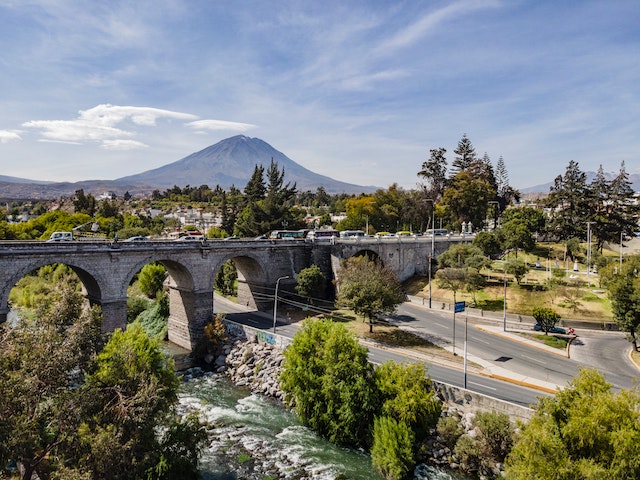
Tarapoto
Tarapoto, often referred to as the “City of Palms,” is a picturesque city located in the San Martín Region of northeastern Peru. Nestled in the foothills of the Andes and surrounded by lush rainforest, Tarapoto is known for its natural beauty, vibrant culture, and opportunities for adventure. Here’s an overview of Tarapoto, Peru:
Natural Beauty: Tarapoto is surrounded by stunning natural landscapes, including dense rainforests, waterfalls, and the Huallaga River. The city is a gateway to the Amazon Rainforest and offers access to numerous national parks and nature reserves.
Biodiversity: The region is known for its incredible biodiversity, making it a haven for birdwatchers, nature enthusiasts, and researchers. You can spot a wide variety of birds, butterflies, and other wildlife species in the area.
Aguashiyacu Waterfall: Located just a short drive from Tarapoto, Aguashiyacu Waterfall is a popular attraction known for its clear waters and lush surroundings. Visitors can swim, relax, and explore the nearby rainforest.
Cultural Diversity: Tarapoto is home to a diverse population, including indigenous communities. This diversity is reflected in the local culture, cuisine, and traditions.
Local Cuisine: The city’s culinary scene offers a fusion of Amazonian and Peruvian flavors. Don’t miss the chance to try regional dishes like juanes (rice and chicken wrapped in banana leaves) and tacacho (fried mashed plantains).
Jungle Adventures: Tarapoto is an excellent starting point for jungle adventures. You can go on guided treks, boat trips, and wildlife watching excursions to explore the rainforest and its hidden gems.
Orchids: The region around Tarapoto is known for its orchid diversity. The city hosts an annual Orchid Festival, where you can see a stunning array of these beautiful flowers.
Language: While Spanish is the official language, you’ll find that many residents in Tarapoto also speak indigenous languages, such as Quechua and Awajún.
Safety: Tarapoto is generally considered safe for tourists. However, when venturing into the jungle or engaging in outdoor activities, it’s important to follow safety guidelines and be prepared for the environment.
Climate: Tarapoto enjoys a warm and tropical climate year-round, making it an attractive destination for those seeking pleasant weather.
